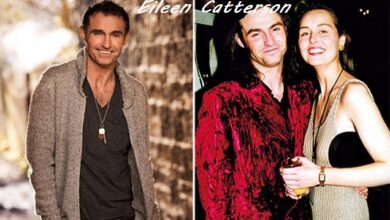Philippe Petit: The Man Who Walked Between the Towers

Philippe Petit is not just a name – it’s a symbol of fearlessness, artistry, and human potential. Known for his daring high-wire walk between the Twin Towers of the World Trade Center in 1974, Petit has captured the imagination of millions across the globe. His story is not just about thrill-seeking; it’s about ambition, creativity, and the refusal to live a conventional life. Let’s dive deep into who Philippe Petit really is, what made him world-famous, and why his legacy continues to inspire artists, dreamers, and risk-takers today.
Early Life and Passion for the Impossible

Philippe Petit was born on August 13, 1949, in Nemours, France. Philippe Petit From a very young age, he was fascinated by things that challenged the ordinary. While other kids were learning sports or playing games, Petit was teaching himself to juggle, ride unicycles, and perform magic tricks. This curiosity eventually led him to discover the art of tightrope walking, a passion that would define the rest of his life.
Petit was not someone who enjoyed formal education or following a strict routine. In fact, he was expelled from several schools for his rebellious nature. But this restlessness was not without purpose — it drove him to explore his artistic side. He was self-taught, practicing balance walking on ropes tied between trees or posts. Every fall, every slip, and every bruise made him better. By his teenage years, he had already decided he wanted to live a life that blurred the lines between performance and adventure.
What made Petit unique was not just his skill but his vision. Philippe Petit He saw tightrope walking as an art form rather than a circus act. To him, it wasn’t just about crossing from one point to another — it was about storytelling, evoking emotions, and giving people an unforgettable moment. This mindset is what eventually led him to conceive one of the most daring stunts in history.
The Audacious Dream: Walking Between the Twin Towers
The story of Philippe Petit cannot be told without mentioning his legendary walk between the Twin Towers. The idea struck him in 1968 when he read about the construction of the towers in a magazine. Most people saw the news as just another engineering marvel, but Petit saw it as an invitation. From that moment on, he became obsessed with the idea of walking between them — not for fame or money, but simply because it was “beautiful.”
Planning the stunt took over six years. Petit and his small team of accomplices carefully studied the construction of the towers, forged identification badges, and posed as construction workers to sneak in equipment. They had to transport nearly 200 kilograms of gear, including a 200-foot steel cable, across several trips without being caught. The preparation was as thrilling as the walk itself — and in many ways, this secret operation was a work of art.
On August 7, 1974, after months of meticulous planning, Petit stepped onto the cable suspended between the two towers, more than 1,300 feet above the ground. Philippe Petit He walked back and forth eight times, spending around 45 minutes performing in the sky. New Yorkers on the streets below stopped in their tracks, police officers rushed to arrest him, and the media went into a frenzy. It was dangerous, illegal, and completely mesmerizing. That single act transformed Petit into a global sensation and earned him the nickname “The Man Who Walked Between the Towers.”
Life Beyond the Towers: Continuing His Art
After his famous stunt in New York, Petit didn’t retire or settle for being remembered for just one feat. Instead, he continued to perform high-wire walks in some of the most iconic locations around the world. He walked between the towers of the Notre-Dame Cathedral in Paris and crossed Sydney Harbour Bridge in Australia. Each walk was unique, not just in its location but in the way Petit presented it.
What made Petit’s performances special was that they were never just about technical skill. They were choreographed like a dance, filled with pauses, bows, and even playful moments like kneeling on the wire or lying down to “rest” mid-walk. Philippe Petit His performances turned tightrope walking into a form of poetic expression. Petit also spent years training other wire walkers and inspiring artists in different disciplines to pursue bold, seemingly impossible projects.
Petit also became an author and public speaker, sharing his philosophy on creativity, risk-taking, and living life without fear. Philippe Petit His books, such as To Reach the Clouds (later re-released as Man on Wire), provide deep insights into his mindset. He encourages readers to dream big, take risks, and embrace challenges — lessons that resonate far beyond the world of tightrope walking.
Legacy and Cultural Impact
Philippe Petit’s 1974 stunt is often called “the artistic crime of the century,” and it remains one of the most famous unauthorized performances ever staged. His story inspired countless documentaries, books, and even Hollywood movies. Philippe Petit The Oscar-winning documentary Man on Wire (2008) beautifully captured the planning and execution of his World Trade Center walk. Later, in 2015, Robert Zemeckis directed The Walk, a dramatized version starring Joseph Gordon-Levitt as Petit. Both works reintroduced Petit’s incredible feat to younger generations who had never heard of him.
But Petit’s legacy is much bigger than just entertainment. He showed the world that art can be rebellious, that beauty can come from defiance, and that taking risks can be a form of expression. He challenged the notion of what was possible, proving that with enough dedication, even the wildest dreams can be turned into reality.
His story has inspired countless entrepreneurs, athletes, and artists to pursue their own “tightrope walks” — metaphorical or literal. For many, Petit’s walk between the towers stands as a metaphor for courage, balance, and trust in oneself.
Lessons We Can Learn from Philippe Petit
Philippe Petit’s life is full of lessons for anyone who has ever dreamed of doing something extraordinary. One of the most important takeaways is his belief that fear is a natural part of the process but should never be the deciding factor. He has openly spoken about how scared he was during some of his walks, but he used that fear as fuel instead of letting it hold him back.
Another important lesson is preparation. Although Petit’s feats might look spontaneous, they were anything but. He trained for months, even years, before attempting a single walk. Every detail was planned — from the equipment setup to the weather conditions. This reminds us that achieving something great requires patience, practice, and relentless dedication.
Lastly, Petit teaches us that life should be lived passionately. Whether you’re a painter, a musician, a writer, or someone just trying to find their purpose, his philosophy encourages you to follow what excites you — even if others think it’s crazy. His story is a reminder that we all have our own “twin towers” to cross, and the journey is worth taking.
Final Thoughts
Philippe Petit is much more than just a daredevil who walked between skyscrapers. He is an artist, a philosopher, and a symbol of human possibility. His life story continues to resonate because it speaks to something universal — the desire to rise above fear, take risks, and create something meaningful.
His legendary walk between the Twin Towers is not just a piece of history; it’s an enduring metaphor for chasing dreams, no matter how impossible they seem. Philippe Petit’s legacy challenges all of us to step onto our own metaphorical wire, to find balance, and to keep moving forward, even when the world is watching.



